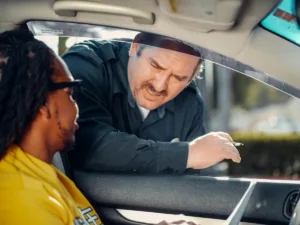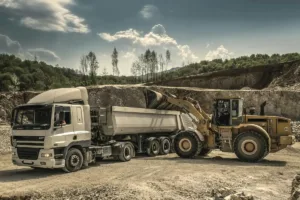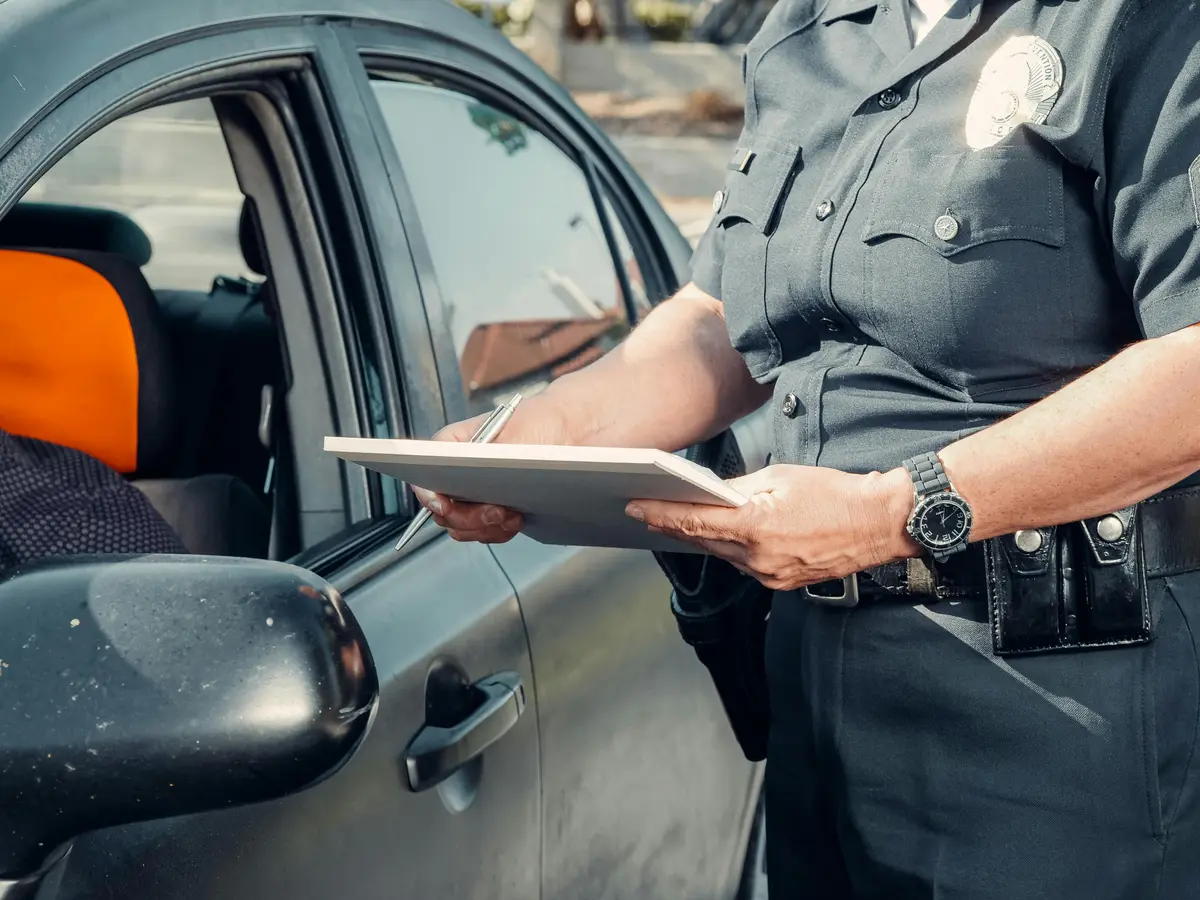Navigating the requirements of a commercial driver’s license (CDL) can be challenging, and sometimes, circumstances arise where downgrading a CDL to a regular driver’s license is necessary. Whether it’s due to a career change, retirement, or compliance issues, understanding how to downgrade my CDL license to regular ensures a smooth transition without unnecessary complications.
In this guide, we’ll break down the reasons for a CDL license downgrade, the steps involved, and what to consider before making the decision. For CDL companies and drivers alike, avoiding unnecessary downgrades often starts with effective compliance management, and that’s where Driver Files Online comes in. Stay ahead of compliance issues with our streamlined tools and resources. Let’s dive into the details!
See how automation and digitized forms streamline CDL management – Sign Up!
What Does It Mean to Downgrade a CDL?
If you’ve ever wondered, “how do I downgrade my CDL license to regular?”, the answer lies in understanding the purpose and implications of a CDL downgrade. A CDL downgrade occurs when a commercial driver’s license (CDL), which allows you to operate commercial motor vehicles (CMVs), is converted into a standard non-commercial license.
For commercial drivers, this is more than just a simple administrative change—it means losing the privileges that come with a CDL, such as operating large trucks, buses, and vehicles transporting hazardous materials. The reasons for a CDL license downgrade vary, but the process is essential to ensure that only qualified drivers maintain their commercial driving status.
Downgrading is not always voluntary. It can be initiated by the state due to non-compliance with federal or state regulations. Understanding the nuances of a license downgrade CDL can help you navigate the process more effectively and avoid unnecessary complications.
READ MORE: CDL Downgrade FAQs: Can I Get My CDL Back? Learn Here!
Why Would Someone Downgrade Their CDL?

There are several scenarios where a driver may need or choose to downgrade a CDL to a standard license. These situations range from personal life changes to mandatory compliance issues enforced by the Department of Motor Vehicles (DMV) or Federal Motor Carrier Safety Administration (FMCSA).
Career Changes
For drivers transitioning to jobs that don’t require a CDL, maintaining their commercial license may feel unnecessary. This is particularly common among drivers who move into office-based roles or non-driving positions within the logistics industry.
Medical Disqualification
A significant reason for involuntary CDL license downgrades is the inability to meet FMCSA medical requirements. Drivers are required to submit a valid medical card to prove they are fit to operate CMVs. Failure to do so can result in a CDL downgrade due to medical disqualification.
RELATED: Iowa DOT Medical Card FAQs: Here’s Everything to Know!
Retirement
Drivers who retire from the trucking industry often opt to downgrade their CDL to a regular license. While they may no longer need commercial driving privileges, they still need a valid driver’s license for personal use.
Non-Compliance
Failure to self-certify your driving type, update medical records, or meet other documentation requirements can lead to a forced license downgrade CDL. For instance, not submitting a valid medical card can result in an automatic downgrade initiated by the state DMV.
Each of these scenarios underscores the importance of staying informed about CDL compliance and understanding how and why a downgrade might occur.
Steps to Downgrade a CDL

If you’re asking, “how to downgrade from CDL to regular license,” the process involves a few essential steps. While the exact requirements vary by state, the following steps provide a general framework:
1. Contact Your State DMV
Start by reaching out to your state DMV or equivalent licensing agency. This will provide you with specific instructions tailored to your state’s regulations. Many DMVs have online portals that explain how to downgrade CDL licenses and list required forms and documents.
2. Complete the Necessary Forms
To initiate a CDL license downgrade, you’ll need to fill out a form requesting the transition to a regular license. This form typically includes personal information, your CDL number, and a statement confirming your request.
3. Provide Supporting Documentation
Most states require drivers to submit certain documents, such as:
- A valid photo ID (e.g., passport or birth certificate)
- Proof of residence
- Your existing CDL
4. Pay the Applicable Fees
The cost of downgrading your CDL varies by state. Be prepared to pay a fee for processing your request, which may include administrative costs and the issuance of a new license.
5. Complete Additional Requirements
In some cases, states may require additional steps, such as:
- Passing a vision test
- Retaking a knowledge test (in rare cases)
Completing these steps ensures a smooth transition from CDL to a regular license, minimizing potential disruptions.
Can I Downgrade My CDL Online?
For drivers asking, “can I downgrade my CDL online?”, the answer depends on the state. Many states have streamlined their DMV services, allowing drivers to begin the downgrade process online.
Online Downgrade Options
- Submit Forms Online: In some states, you can fill out and submit the downgrade request form via the DMV’s website.
- Pay Fees Electronically: Online payment options make it easy to complete the process from home.
- Mail-In or In-Person Requirements: Some states may still require you to surrender your CDL in person or via mail, even if you start the process online.
Before starting, check your state DMV’s website to confirm whether you can downgrade CDL licenses online and what additional steps may be required.
Implications of a CDL Downgrade

Choosing to downgrade a CDL has significant implications for both drivers and employers. While the process may seem straightforward, it can have long-term effects on your career and licensing status.
Loss of CDL Privileges
Once you downgrade CDL, you no longer have the legal authority to operate CMVs. If you decide to return to the industry later, you may need to retake written and skills tests to regain your CDL.
Limited Job Opportunities
For drivers leaving the industry temporarily, a CDL license downgrade may limit future job opportunities. Many trucking companies prioritize drivers with an active CDL and a clean driving record.
Documentation Requirements
Even after a downgrade, drivers may need to retain records of their CDL and the downgrade process for future reference. Some states require drivers to provide proof of their downgrade during audits or future licensing requests.
How Driver Files Online Helps CDL Companies Avoid Downgrades

While the process of downgrading a CDL is usually driven by personal choice or medical disqualification, many downgrades occur due to non-compliance. Driver Files Online helps CDL companies prevent these situations by offering robust compliance management tools.
1. Automated Medical Card Reminders
One of the most common reasons for forced downgrades is the failure to submit a valid medical card. Driver Files Online sends automated reminders to both drivers and employers before medical cards expire, ensuring compliance and avoiding unnecessary downgrades.
2. Document Storage and Accessibility
Driver Files Online provides secure storage for driver qualification files, medical certifications, and compliance documents. Employers can easily access these records during audits or when updating driver information.
Compliance documents available in Drivers Files Online include:
3. Real-Time Compliance Tracking
With real-time updates on driver statuses, Driver Files Online helps companies monitor CDL compliance, reducing the risk of unexpected downgrades or disqualifications. We even offer an upgrade to get Managed Services from a member of our support team, ensuring less paperwork on your end!
Managing CDL Downgrades with Confidence
According to the FMCSA, there are approximately 5.9 million commercial driver’s license (CDL) holders in the United States. With millions of drivers navigating compliance requirements, you’re not alone in wanting to ensure you do everything correctly.
Learning how to downgrade from CDL to regular license is a common hurdle for drivers considering career changes, retirement, or facing medical disqualifications. By following the correct procedures, you can ensure a smooth transition while maintaining compliance with state and federal requirements.
For CDL companies, staying compliant is crucial to avoiding forced downgrades and other penalties. Driver Files Online simplifies compliance management with automated reminders, secure document storage, and real-time tracking tools.
Take control of your compliance with Driver Files Online — your trusted partner in CDL management.
Disclaimer:
This content is for informational purposes only. Please consult your state DMV or legal professionals for specific guidance.
Frequently Asked Questions (FAQ)
How Do I Downgrade My CDL License to Regular?
To downgrade your CDL license to regular, contact your state DMV, complete the required forms, submit your CDL, and pay applicable fees.
Can I Downgrade My CDL Online?
Yes, many states allow drivers to start the license downgrade CDL process online. Check your state DMV’s website for specific details.
What Happens If I Don’t Maintain My CDL?
Failure to maintain compliance, such as submitting a valid medical card, can result in a CDL license downgrade or suspension of your CDL.
Can I Reinstate My CDL After a Downgrade?
Yes, but the process varies by state. You may need to retake written and skills tests, submit documentation, and pay reinstatement fees.
